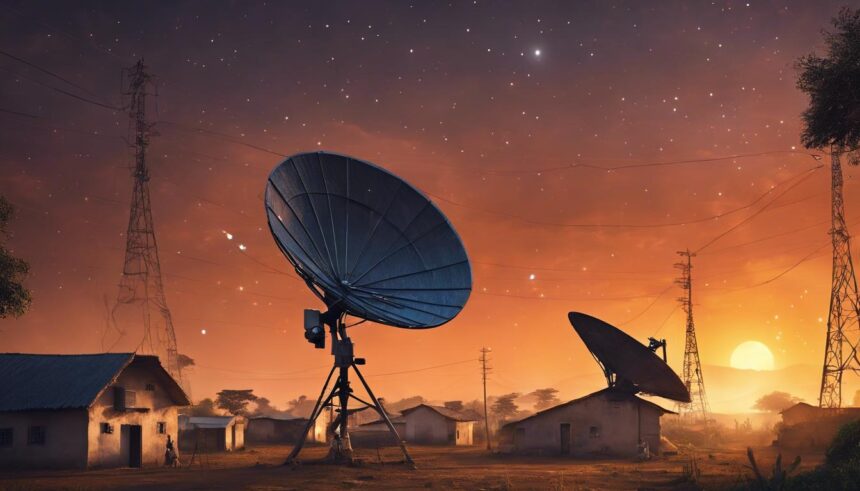Africa Mobile Networks has teamed up with SpaceX’s Starlink to launch a base station in rural Nigeria using satellite technology to improve internet accessibility and drive socio-economic growth in isolated communities.
In a groundbreaking move poised to transform the digital landscape of rural Nigeria, Africa Mobile Networks (AMN) has implemented the first of its base stations using high-speed, low-latency backhaul from SpaceX’s innovative Starlink satellite constellation. This partnership marks a significant milestone in the use of advanced satellite technology to bridge the digital divide in some of the most remote areas of the world.
AMN, which started its operations in Nigeria back in 2018, has since been at the forefront of deploying mobile network base stations across rural regions. The organization currently operates 1600 base stations throughout Nigeria, with a notable presence in Yebu—a village roughly 80 kilometers from the capital, Abuja. The journey to Yebu is a strenuous four-hour drive, typical of the challenges faced when accessing remote Nigerian communities.
The utilisation of Starlink’s low Earth orbit (LEO) satellites for satellite backhaul is pivotal. It provides the technical infrastructure necessary to support not only existing 2G, 3G, and 4G services but also the future rollout of 5G by the end of 2024. Traditionally, rural areas such as Yebu have suffered from poor connectivity and low economic activity, primarily reliant on agriculture. The introduction of reliable and fast internet has the potential to significantly uplift these communities by opening new markets, enhancing educational opportunities, and improving healthcare access.
For instance, since the deployment of an AMN base station in Yebu in November 2018, the community has seen radical transformations. These include the establishment of a police division, implementation of a 24-hour solar-powered electricity supply, and the enhancement of both local and global communications. Such advancements underscore the profound impact that connectivity has on the social and economic wellbeing of rural populations.
The adaptation of Starlink technology by AMN for backhaul—a method which connects the base station to the core network—is particularly noteworthy. Starlink provides a much-needed solution for areas where traditional terrestrial backhaul infrastructure, like fiber optic cables, is impractical or too costly to deploy. AMN’s innovative approach has already facilitated a significant increase in data traffic, with Yebu witnessing nearly threefold growth following upgrades to the AMN’s own Radio Access Node systems.
Other rural communities in Nigeria and across other parts of Africa and Latin America are poised to benefit from similar advancements. With plans to escalate deployment and connect more regions through 2024, AMN continues to pioneer solutions that aim to make digital equality a reality. Its commitment is also reflected in its strategic decision to become an Original Equipment Manufacturer for Radio Access Network equipment, underscoring a dedicated approach to tackling unique challenges posed by rural environments.
This initiative is part and parcel of a larger global movement to address the digital divide. Efforts such as these by AMN, in partnership with technological providers like SpaceX, are vital in ensuring that the benefits of the digital age are not limited to urban centers but are extended to every corner of the globe, fostering greater inclusivity and progress in traditionally underserved areas.





